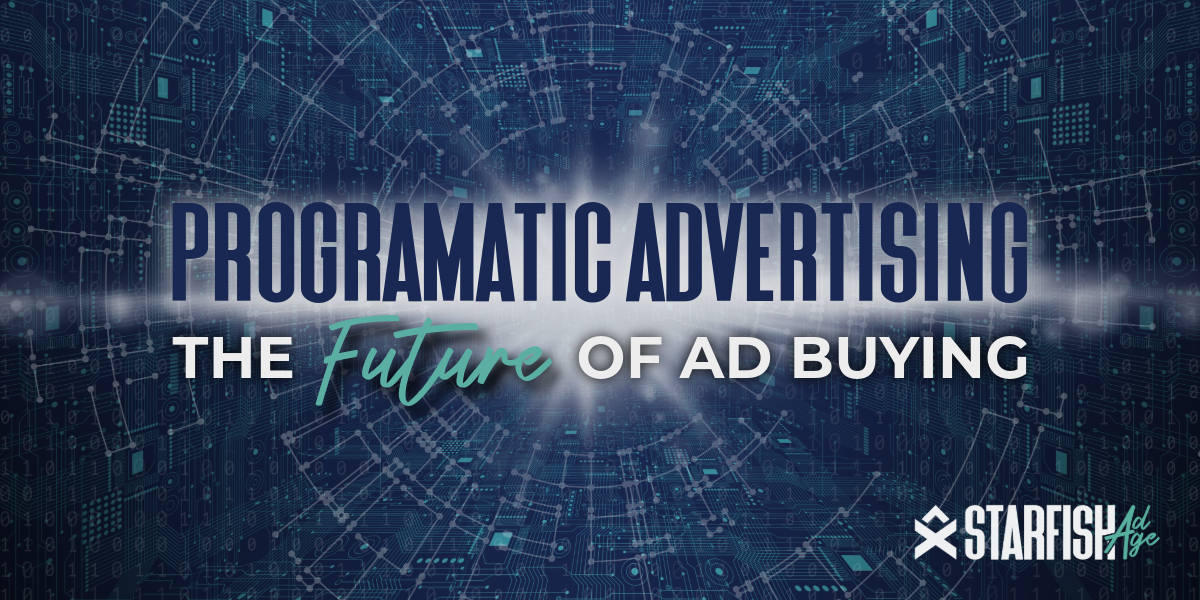
What Is Programmatic Advertising?
Discover the benefits of programmatic advertising, an automated method of buying digital ad space that enhances targeting, efficiency, and campaign performance.

Social media offers a dynamic platform for businesses to promote their brand, products, and services to a broad and engaged audience. By leveraging the power of social networks, companies can enhance their online presence, increase brand awareness, and foster direct engagement with customers. Through targeted advertising, the creation of shareable content, and the utilization of influencer partnerships, social media allows businesses to reach specific demographics with precision, tailoring messages to resonate with different audience segments.
Moreover, social media provides invaluable insights into customer behavior and preferences, enabling businesses to refine their marketing strategies in real time. By building a community around their brand, businesses can cultivate customer loyalty, encourage word-of-mouth promotion, and ultimately drive sales, making social media an indispensable tool in the modern digital marketing toolkit.

The advent of social media has revolutionized the way businesses interact with their customers. It’s no longer just about pushing out advertisements and hoping for the best. Social media platforms offer a unique space where brands can engage directly with their target audience, creating a two-way communication channel that was previously unheard of.
This direct line of communication allows for real-time feedback, customer service opportunities, and a deeper understanding of customer preferences, which can significantly influence a business’s approach to marketing its products or services.
Social media platforms provide businesses with the ability to reach a vast audience with minimal financial investment. Whether it’s a global giant or a local startup, social media levels the playing field, giving every business the chance to capture the attention of potential customers.
Through targeted ads, organic social media posts, and engaging content, businesses can effectively promote their brand, products, and services to a global audience, breaking geographical barriers that traditional marketing methods cannot.
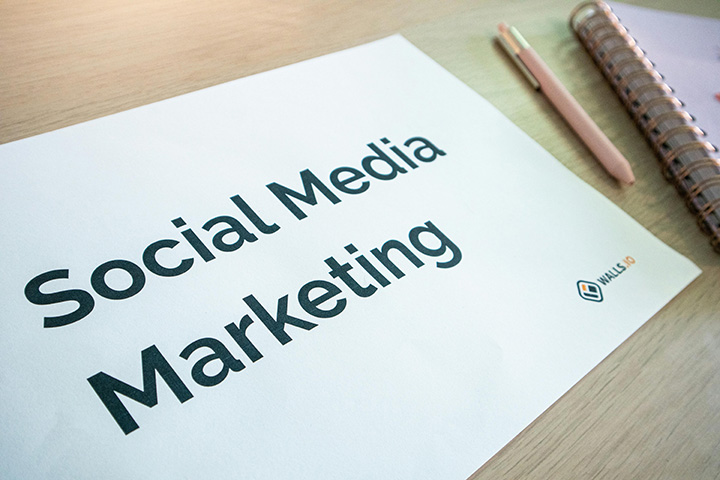
Integrating social media into the broader spectrum of digital marketing strategies is crucial for businesses aiming to thrive. Digital marketing strategies encompass various online marketing tactics and channels, including email marketing, search engine optimization (SEO), pay-per-click advertising (PPC), content marketing, and more.
Social media marketing, however, plays a pivotal role in these strategies, acting as the connective tissue that enhances other digital marketing efforts. The strategic use of social media can amplify a brand’s visibility online, driving traffic to websites, increasing search engine rankings, and boosting conversion rates.
By crafting compelling content that resonates with the target audience, businesses can create engaging content to foster engagement, encourage shares, and create a community around their brand. This not only increases brand awareness but also positions the brand as an authority in its niche, building trust with potential customers.
Social media platforms are treasure troves of data, offering insights into customer behavior, preferences, and trends. By analyzing this data, businesses can refine their digital marketing strategies, tailoring their content and advertisements to better meet the needs and interests of their audience. This data-driven approach ensures that marketing efforts are not just shots in the dark but are informed decisions that lead to higher engagement, loyalty, and ultimately, conversions.
Social media marketing is an indispensable tool in the arsenal of digital marketing strategies. Its ability to connect businesses directly with their audience, coupled with its cost-effectiveness and data-rich environment, makes it a powerful platform for promoting a business. As we move further into the digital era, the integration of social media marketing into broader digital marketing strategies will continue to be a key driver of business success.
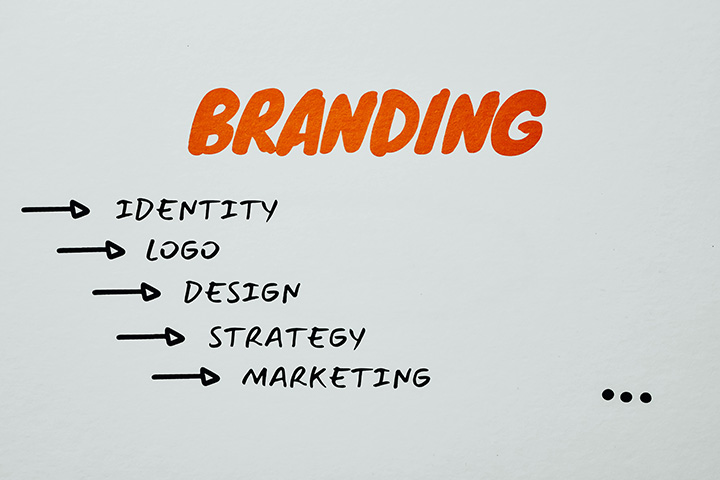
In today’s competitive marketplace, building a strong brand is crucial for business growth and success. Social media offers unparalleled opportunities for enhancing brand awareness, expanding online presence, and implementing strategies that drive effective marketing campaigns.
Social media serves as a powerful platform for enhancing brand and consumer awareness, allowing businesses to showcase their personalities, values, and offerings to a broad audience. The interactive nature of social media enables brands to not just broadcast their messages but also engage in meaningful conversations with their audience. This engagement is vital for building brand recognition and recall.
Creating shareable content is key to spreading brand awareness on all social media networks. This includes eye-catching visuals, compelling videos, insightful infographics, and content that adds value to your audience’s daily lives. When content resonates with users, they are more likely to share it with their network, further amplifying your brand’s reach. Additionally, social media platforms offer targeting options that allow businesses to reach specific segments of their audience based on demographics, interests, and behavior, ensuring that your brand message reaches the right people.
An active and engaging presence on social media is essential for expanding your online presence. Each platform offers unique features and caters to specific audiences, providing businesses with the opportunity to tailor their content and interactions to match the platform’s dynamics. Regularly updating your social media profiles with fresh content, participating in trends, and interacting with followers can significantly boost your visibility online. Social media also plays a crucial role in driving traffic to your website.
By including links to your website in your social media content and bio, you can direct your social media audience to your website, increasing web traffic and potentially converting visitors into customers. Moreover, social media’s contribution to SEO should not be underestimated. Social signals, such as likes, shares, and comments, can indirectly influence your website’s search engine ranking, thereby enhancing your overall online presence.
Effective marketing campaigns on social media require strategic planning, creativity, and adaptability. Setting clear objectives is the first step in any marketing campaign. Whether it’s increasing brand awareness, driving website traffic, or boosting sales, having a clear goal helps in crafting a focused strategy.
Utilizing the diverse ad formats available on social media platforms, such as photo ads, video ads, carousel ads, and stories, can help capture the attention of your target audience. These formats offer creative ways to showcase your products or services, tell your brand story, and engage with your audience. Moreover, A/B testing different ad creatives and targeting options can help identify what resonates best with your audience, allowing you to optimize your campaigns for better results.
Contests, polls, Q&A sessions, and user-generated content initiatives can foster a sense of community and engagement around your brand. Additionally, monitoring the performance of your campaigns through analytics is crucial for understanding their impact and making informed decisions for future campaigns.
Building your brand on social media is a multifaceted process that involves enhancing brand awareness, expanding your online presence, and executing strategic marketing campaigns. By leveraging the unique opportunities presented by social media, businesses can create a strong, recognizable brand that resonates with their target audience and stands out.
Understanding your target audience is the bedrock upon which successful strategies are built. It’s a process that involves careful analysis and insight to ensure that every piece of content, every marketing campaign, and every interaction is aligned with the preferences and needs of the people you aim to reach. This section explores the critical steps of identifying and targeting your audience, developing a content strategy tailored to them, and the pivotal role of engagement rate in measuring success.
The first step in any effective digital marketing strategy is to identify and understand your target audience. This involves more than just demographic information; it requires a deep dive into the psychographics of your audience, including their interests, behaviors, preferences, and pain points. Social media platforms offer a wealth of tools and analytics that can help businesses segment their audience and understand who they are talking to.
By leveraging these tools, businesses can create detailed audience personas, which serve as representations of their ideal customers. These personas can guide not only what kind of content you produce but also how you engage with your audience across different platforms. Targeting becomes more refined through the use of social media advertising, where you can specify criteria such as age, location, interests, and much more, ensuring that your message reaches the most receptive audience.

Once you have a clear understanding of your target audience, the next step is to develop a content strategy that speaks directly to them. This means creating content that resonates with their interests, addresses their challenges, and offers solutions they care about. A tailored content strategy is not a one-size-fits-all approach; it requires customization and personalization. It’s about delivering the right message, to the right people, at the right time.
Content variety is key to keeping your audience engaged. This could mean mixing educational blog posts with engaging videos, informative infographics, and interactive polls or quizzes. Each piece of content should serve a purpose, whether it’s to inform, entertain, inspire, or convert. Furthermore, the content should be optimized for each social media platform, taking into account the unique features and user expectations of each.
The engagement rate is a critical metric in digital marketing, serving as a barometer for how effectively your content resonates with your audience. It measures not just the reach of your content but how much your audience interacts with it through likes, comments, shares, and saves. A high engagement rate indicates that your content strategy is on point, engaging your audience in a meaningful way.
Engagement is the currency of social media. It signifies a strong connection between your brand and your audience, fostering loyalty and encouraging word-of-mouth promotion. Moreover, platforms like Facebook and Instagram use engagement as a key factor in their algorithms, determining how widely your content is distributed. Therefore, prioritizing content that encourages interaction can lead to greater visibility and reach.
In essence, understanding your target audience is a continuous process of learning and adaptation. It requires a commitment to listening to your audience, analyzing data, and refining your strategies. By identifying and targeting your audience with tailored content and focusing on engagement, you can build a robust digital marketing strategy that not only reaches but resonates with the people most important to your business.
Leveraging social media platforms is akin to navigating a vast ocean, where each platform is a unique ecosystem with its own rules, audience, and potential.

A social media marketing strategy outlines your business goals, the tactics you will use to achieve them, and the metrics you will track to measure your progress. It’s a comprehensive plan that guides your actions on your social media channels, ensuring they contribute to your business objectives. It involves selecting the right platforms, crafting your messages, scheduling your posts, and analyzing your results to refine your approach.
The foundation of any social media marketing strategy is clear, measurable goals. These might include increasing brand awareness, driving website traffic, generating leads, or boosting sales. Your goals should align with your overall marketing and business objectives and follow the SMART criteria: Specific, Measurable, Achievable, Relevant, and Time-bound.
Facebook: The Social Giant
Facebook remains a powerhouse for social media marketing, offering extensive reach and sophisticated advertising options. It’s ideal for building communities, engaging with customers, and targeting specific demographics with precision.
Instagram: The Visual Platform
Instagram’s visual-centric format is perfect for brands with strong visual content. It excels in storytelling, brand building, and engagement, leveraging features like Stories, Reels, and IGTV.
Twitter: The Conversation Starter
Twitter is the go-to platform for real-time engagement, allowing brands to join conversations, share updates, and address customer service inquiries promptly.
LinkedIn: The Professional Network
LinkedIn stands out for B2B marketing, offering a platform for thought leadership, professional networking, and targeted advertising to industry professionals.
Pinterest: The Inspiration Board
Pinterest is ideal for brands in the lifestyle, decor, fashion, and food sectors, providing a space for visual discovery and inspiration with a high intent to purchase.

Influencer marketing leverages individuals with a significant following and high engagement rates to promote your brand. These collaborations can increase your brand’s credibility, extend your reach, drive traffic, and introduce your products or services to a new audience.
The success of influencer marketing depends on selecting influencers who align with your brand values and resonate with your target audience. Authenticity and alignment are key to ensuring the partnership benefits both parties.

Hashtag campaigns can significantly increase the visibility of your content on social media platforms. By using relevant and strategic hashtags, you can reach beyond your existing followers to a wider audience interested in your content or offerings.
Effective hashtag campaigns are memorable, unique, and aligned with your brand message. They encourage user participation and engagement, spreading your brand’s reach organically.
By understanding and strategically leveraging the unique features of each social media platform, employing the influence of well-aligned influencers, and creating impactful hashtag campaigns, businesses can significantly enhance their online presence and achieve their marketing objectives.V. Enhancing Customer Interaction
Content is crucial to a good marketing strategy, acting as the driving force behind engaging audiences, conveying brand messages, and fostering customer loyalty. This section explores the importance of visual content, the art of creating compelling social media ads, and strategies for building brand loyalty through content.

Visual content, including videos and infographics, plays a crucial role in capturing the audience’s attention and enhancing message retention. In an era where users are bombarded with information, visuals stand out by offering an immediate, engaging, and easy-to-digest format.
Videos offer a dynamic way to showcase your products, tell your brand’s story, and connect with your audience on an emotional level. Infographics, on the other hand, provide a visually appealing method to present complex information or data in an accessible and understandable manner. Both formats can significantly increase engagement and shareability on social media platforms.
Creating social media ads that resonate with your audience requires a deep understanding of their preferences, pain points, and the value your product or service offers. Effective ads are not just promotional but provide value, whether through entertainment, information, or inspiration.
To maximize the effectiveness of your social media ads, it’s essential to employ A/B testing, comparing different versions of your ads to see which performs better. This data-driven approach allows you to refine your messaging, visuals, and targeting to ensure your ads resonate with your audience and achieve your marketing goals.

Content can be a powerful tool for building and nurturing relationships with your audience, thereby fostering brand loyalty. By consistently providing value through your content, you establish your brand as a trusted resource and authority in your field.
Engaging with your audience through content involves creating interactive and personalized experiences that make your audience feel valued and heard. Rewarding engagement, whether through exclusive content, promotions, or community recognition, can further deepen the connection between your brand and its followers, encouraging loyalty and advocacy.
In conclusion, the adage “Content is King” holds true in the digital marketing domain. By prioritizing the creation of visually engaging content, crafting resonant social media ads, and using content to foster and build brand awareness and loyalty, businesses can effectively engage their audience, differentiate their brand, and achieve their marketing objectives.
In the fast-evolving digital marketing world, staying ahead requires innovative strategies that capture attention, engage audiences, and drive action. This section covers the strategic potential of viral marketing, the power of user-generated content, and the importance of competitive analysis as core component of innovative digital marketing campaign strategies.
Viral marketing refers to strategies designed to make content spread rapidly online, much like a virus, by leveraging networks of individuals to share the content. The aim is to create buzz and widespread visibility without the need for traditional advertising channels.
Creating viral content often involves tapping into current trends, emotional triggers, and share-worthy content that resonates with a broad audience. It’s about crafting messages or campaigns that are so compelling, entertaining, or informative that people feel motivated to share them with their networks, amplifying the content’s reach exponentially.
User-generated content (UGC) is any form of content—text, posts, images, videos, reviews, etc.—created by individuals rather than brands. UGC is invaluable because it’s authentic and trusted more by consumers than traditional advertising. It serves as social proof, demonstrating the real-world appreciation and use of a product or service.
Encouraging your audience to share their own experiences with your brand can significantly boost engagement and loyalty. Strategies to harness UGC include creating branded hashtags, hosting contests, and featuring user content on your own channels. Not only does this provide you with authentic material to share, but it also deepens your relationship with your audience by valuing their input and participation.

Competitive analysis involves systematically evaluating your competitors’ strategies, strengths, and weaknesses to identify opportunities and threats. In the context of digital marketing, this means analyzing their online presence, content strategy, social media engagement, SEO tactics, and advertising campaigns.
Effective competitive analysis requires the use of tools and platforms that can provide insights into competitors’ online performance and audience behavior. This includes social media monitoring tools, SEO platforms, and content analysis tools. By understanding what works for your competitors—and what doesn’t—you can refine your own strategies, differentiate your brand, and identify gaps in the market that you can exploit.
Innovative marketing strategies, including viral marketing, user-generated content, and competitive analysis, are crucial for businesses looking to stand out in a crowded digital space. By understanding and implementing these strategies, brands can engage their audience in new and exciting ways, build stronger connections, raise brand awareness, and drive greater success in their marketing efforts.
Navigating the complexities of social media marketing requires more than just creativity and strategic insight; it also demands the right set of tools and a keen understanding of measurement metrics.
To efficiently manage multiple social media accounts, automate postings, and track engagement, marketers rely on a variety of tools. These tools can help with content scheduling, analytics, customer service, and more, ensuring that marketers can stay organized and proactive.
At the heart of social media is the ability to build a community around your brand. This involves not just accumulating followers but engaging with them, creating a sense of belonging, and fostering an environment where interactions are encouraged.
Measuring the return on investment (ROI) from social media marketing is critical to understanding its effectiveness and justifying the allocation of resources. ROI helps quantify both the tangible and intangible benefits of social media marketing in terms of revenue, increased brand awareness, customer engagement, and loyalty.
Leveraging the right tools to manage and measure your social media efforts is essential for any digital marketing strategy. By effectively building and nurturing an online community and closely monitoring ROI, businesses can optimize their social media presence, ensuring that their efforts contribute positively to the overall business objectives.

Social media marketing offers a cost-effective way for small businesses to reach a wider audience, enhance brand visibility, and engage directly with customers. By utilizing social media platforms, businesses can share their story, showcase their products or services, and build a community around their brand, leading to increased brand loyalty and potentially higher sales.
The key components of an effective social media marketing strategy include setting clear and measurable goals, understanding your target audience, creating and curating engaging content, choosing the right platforms based on where your audience spends their time, and analyzing your results to refine your own strategy and approach continually.
Success in social media marketing can be measured using a variety of metrics, including engagement rate (likes, comments, and shares), reach, website traffic referred from social media, conversion rate, and overall growth in followers. Using social media analytics tools, you can track these metrics over time to understand the effectiveness of your strategies.
Visual content, such as videos, images, and infographics, is crucial in social media marketing because it can capture the audience’s attention more effectively than text-only content. Visuals are more shareable and memorable, helping to increase engagement and convey your message more powerfully.
The optimal frequency of posting on social media varies depending on your industry, the platforms you’re using, and your audience’s preferences. However, consistency is key. It’s important to maintain a regular posting schedule to keep your audience engaged without overwhelming them. Analyzing your engagement data can help you find the right balance for your specific situation.

Discover the benefits of programmatic advertising, an automated method of buying digital ad space that enhances targeting, efficiency, and campaign performance.
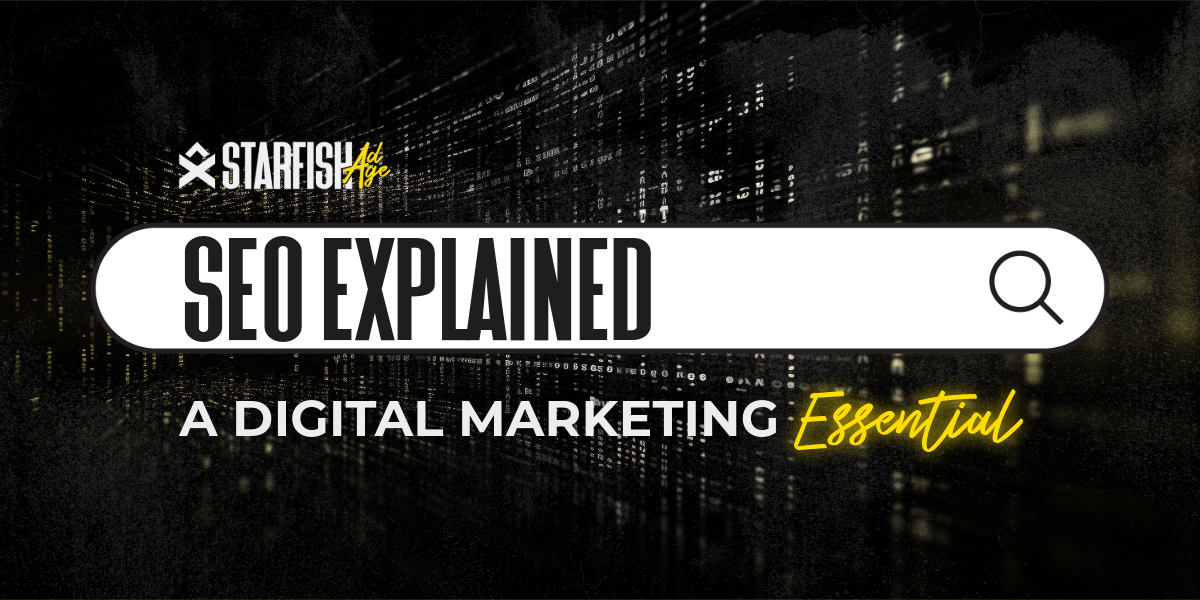
Discover what SEO in digital marketing is and why it matters. Learn how search engine optimization can increase your business’s success.

Learn how to advertise on Google effectively. The basics of Google Ads, from setting up your account to targeting your audience and driving qualified traffic.
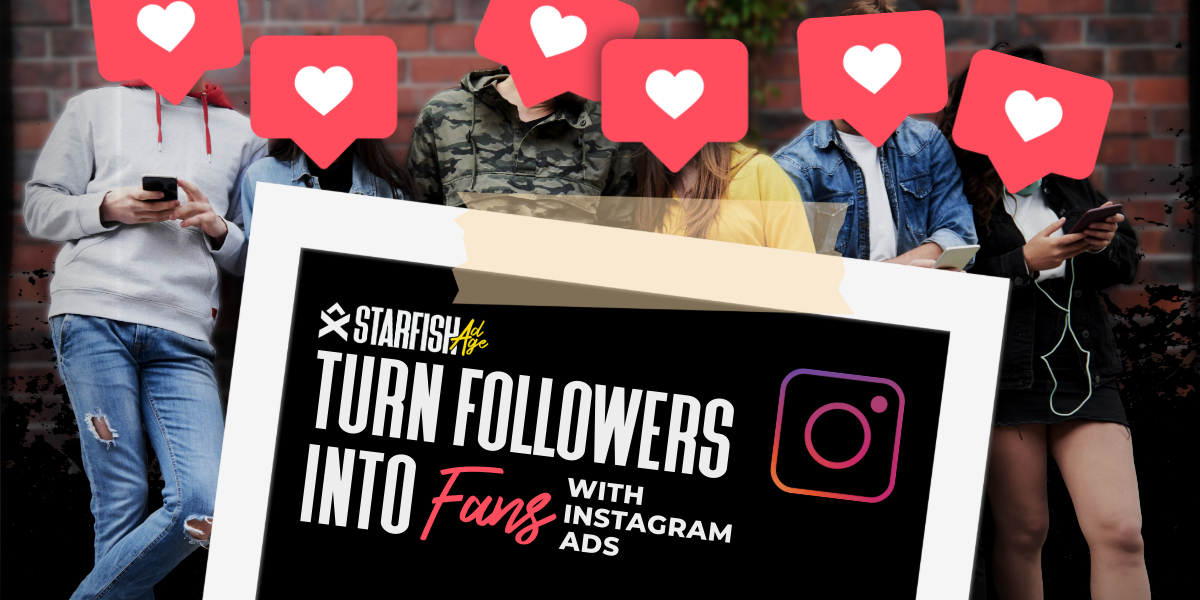
Discover how to advertise on Facebook. Learn about Facebook ad campaigns, targeting options, and ad formats to reach your audience effectively.
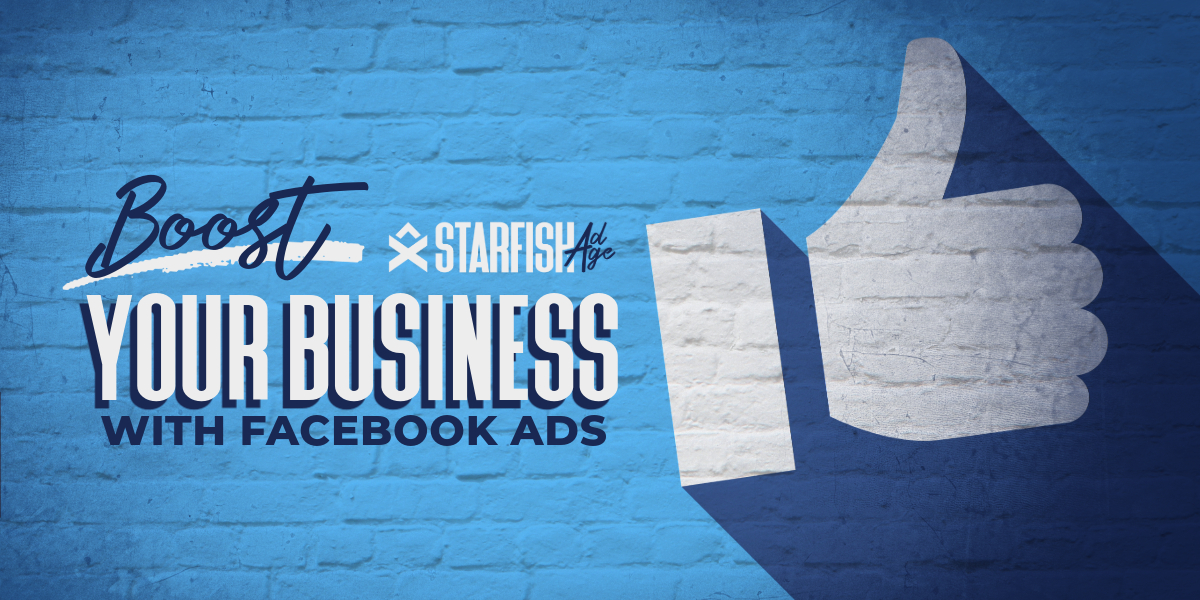
Discover how to advertise on Facebook. Learn about Facebook ad campaigns, targeting options, and ad formats to reach your audience effectively.
All Rights Reserved | Starfish Ad Age LLC | 2023 | Privacy Policy